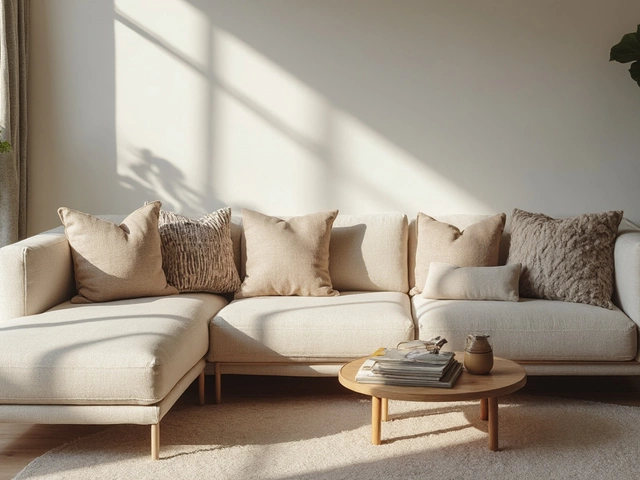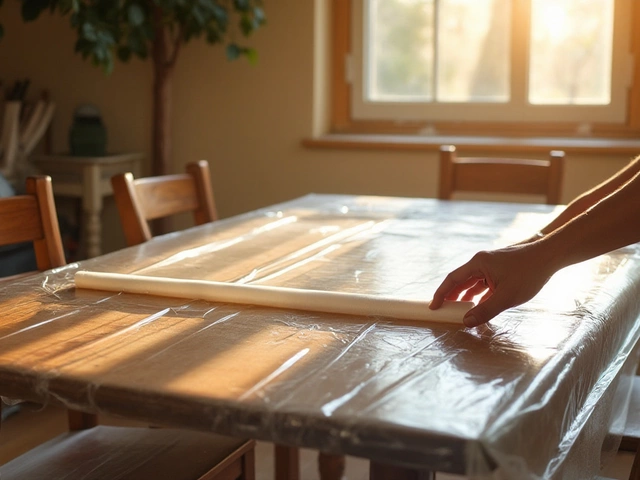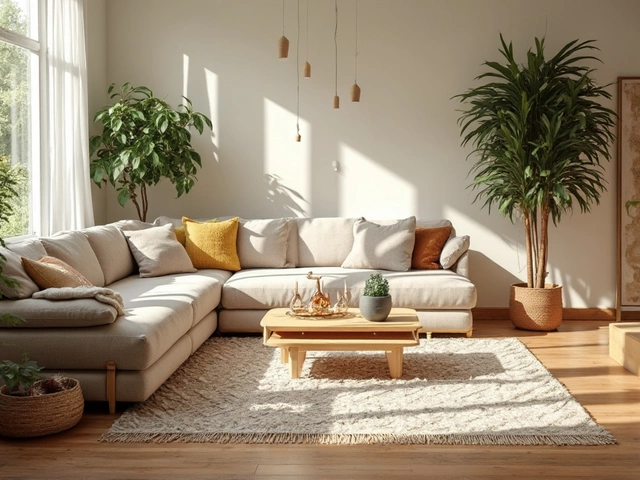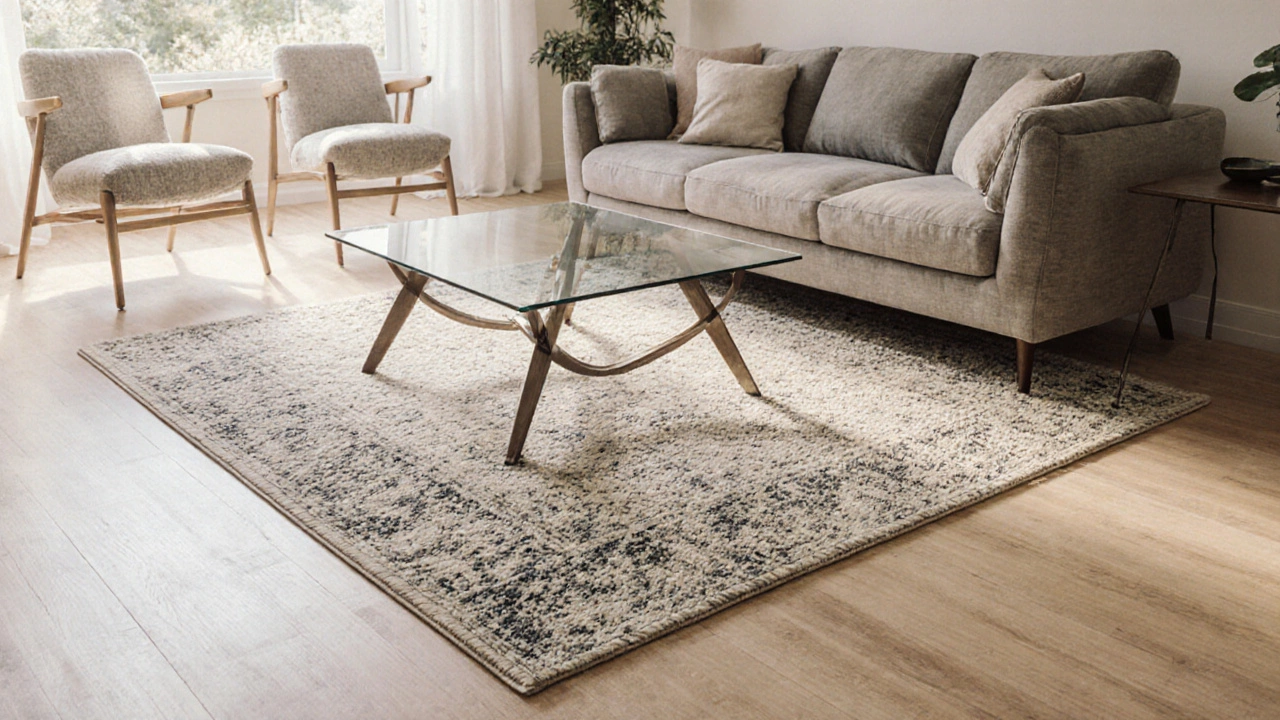
Rug Size Calculator for Coffee Tables
Recommended Rug Size
Size Guidelines:
- All-Four-Legs Rule: Extend at least 12-18 inches beyond each side of the coffee table.
- Sofa Containment Rule: If placing a sofa, ensure rug width covers front legs.
- Room-Percentage Rule: Rug should cover 40-60% of room floor area.
When styling a living area, rug is a floor covering that adds texture, color, and definition to a space. Pairing it with a coffee table is a common move, but the question remains: should you have a rug under a coffee table? Below we unpack the practical, aesthetic, and functional angles so you can decide with confidence.
Why the Placement Matters
A rug under coffee table can anchor the seating zone, protect the floor, and soften the visual impact of hard edges. Yet the wrong size or material can cause tripping hazards or make the room feel cramped. Understanding the role of each component helps you avoid costly missteps.
Key Factors to Evaluate
Before you lay anything down, run through these seven checkpoints. Each one ties back to a core entity that influences the final look.
- Living room size and shape - a spacious loft can handle a larger rug, while a compact apartment may need a modest square.
- Floor type - hardwood, laminate, or tile each react differently to weight and moisture.
- Rug size - the ratio of rug to sofa and coffee table determines balance.
- Rug padding - a slip‑resistant underlay adds safety and comfort.
- Furniture layout - how the sofa, chairs, and table sit relative to the rug edges.
- Interior style - modern minimalism versus cozy rustic influences pattern and colour choices.
- Foot traffic - high‑traffic families need durable fibres, while a low‑use lounge can afford delicate textures.
Size Rules of Thumb
Getting the dimensions right is the single biggest decision. Here are three reliable formulas:
- All‑four‑legs rule: The rug should extend at least 12‑18 inches beyond each side of the coffee table.
- Sofa containment rule: If you want the front legs of the sofa on the rug, the rug’s width should be roughly the sofa’s length plus 24 inches.
- Room‑percentage rule: Aim for the rug to cover about 40‑60% of the total floor area in a rectangular room.
For a standard 48"×48" coffee table, a 8‑ft×10‑ft rug usually satisfies the all‑four‑legs rule while still leaving breathing room around the perimeter.
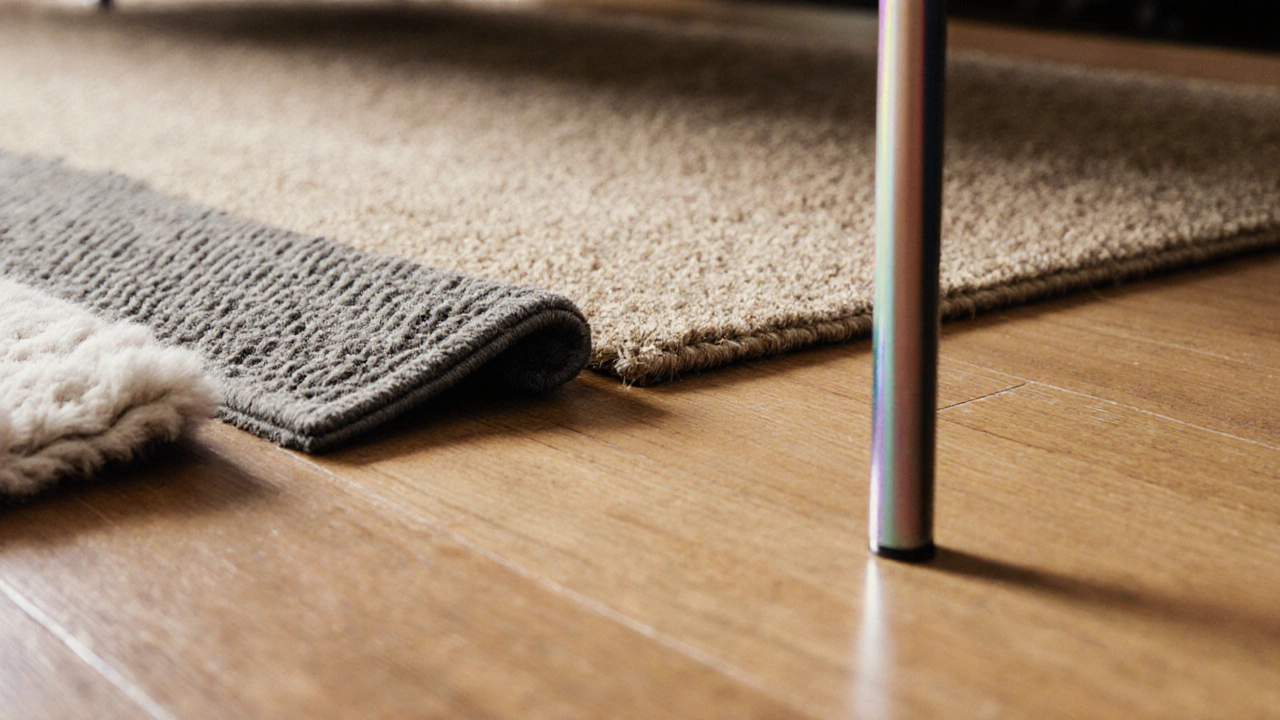
Material Matters
Different fibres behave uniquely under a coffee table’s weight and foot traffic. Consider these options:
| Material | Durability | Feel Under Feet | Maintenance |
|---|---|---|---|
| Wool | High - naturally resilient | Soft, plush | Spot‑clean, occasional dry clean |
| Polypropylene | Medium - stain‑resistant | Firm, slightly slick | Machine washable |
| Jute | Low - prone to wear | Coarse, earthy | Vacuum, avoid moisture |
| Silk | Low - delicate | Ultra‑smooth | Professional cleaning only |
For households with kids or pets, wool or polypropylene strike the best balance between comfort and durability.
Pros of Placing a Rug Under a Coffee Table
- Visual anchor: The rug defines the conversation zone and prevents the space from feeling floating.
- Floor protection: It shields hardwood or tile from scratches, spills, and heat marks.
- Acoustic benefit: Soft fibres dampen echo, making the room feel cozier.
- Design flexibility: Swapping out a rug is cheaper than moving furniture, letting you refresh the look seasonally.
Cons and How to Mitigate Them
- Trip hazard: If the rug is too small, edges create a snag point. Choose the right size or add a low‑profile rug pad.
- Uneven wear: The coffee table’s legs can crush fibres over time. Rotate the rug every few months.
- Cleaning challenge: Spills under a table are harder to spot. Use a stain‑resistant material and a removable pad.
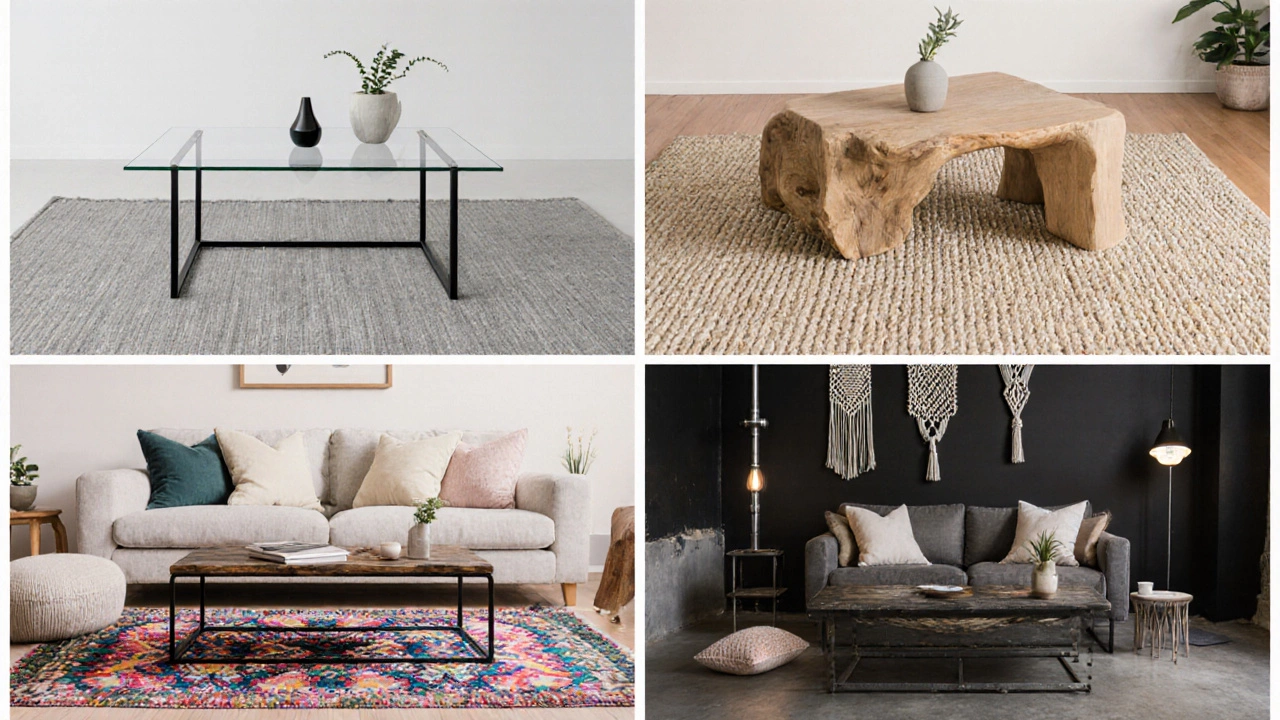
Styling Tips for Different Aesthetics
Below are quick style suggestions that marry the rug with the coffee table without clashing.
- Modern minimal: Opt for a low‑pile neutral rug and a glass or metal coffee table. The clean lines keep the room airy.
- Scandinavian: A light‑coloured woven rug paired with a chunky wood table adds warmth while staying bright.
- Boho chic: Layer a patterned kilim under a distressed wooden table; add a few floor‑level cushions for texture.
- Industrial: Choose a dark, flat‑woven rug beneath a steel‑frame table; expose concrete floors for contrast.
Installation Step‑by‑Step
- Measure the seating area. Sketch the rug’s outline on paper to visualise placement.
- Select a rug that satisfies the all‑four‑legs rule and matches your style.
- Lay a non‑slip rug pad to prevent movement and add cushion.
- Center the rug in the room, then position the coffee table on top, ensuring even margins on all sides.
- Step back and adjust any furniture that looks off‑center.
- Rotate the rug 180° every three to six months to promote even wear.
Following these steps keeps the look polished and the floor safe.
Frequently Asked Questions
Do I need a rug under a coffee table?
A rug isn’t mandatory, but it adds visual cohesion, protects the floor, and can improve acoustics. If your floor is delicate or you want a defined conversation zone, a rug is a smart choice.
What rug size works best with a standard coffee table?
For a 48"×48" table, aim for an 8‑ft×10‑ft rug or at least a 6‑ft×9‑ft rug that extends 12‑18 inches beyond each side. This keeps the layout balanced and prevents tripping.
Can I place a rug on carpeted floors?
Yes, but add a thin rug pad between the two layers to stop slipping. Choose a low‑pile rug so the combined thickness doesn’t become a stumbling block.
How often should I rotate the rug?
Rotate 180 degrees every three to six months. This evens out wear from the coffee table legs and foot traffic, extending the rug’s life.
What rug material handles spills best?
Synthetic fibres like polypropylene are stain‑resistant and easy to clean. Wool also performs well if you treat spills quickly.

